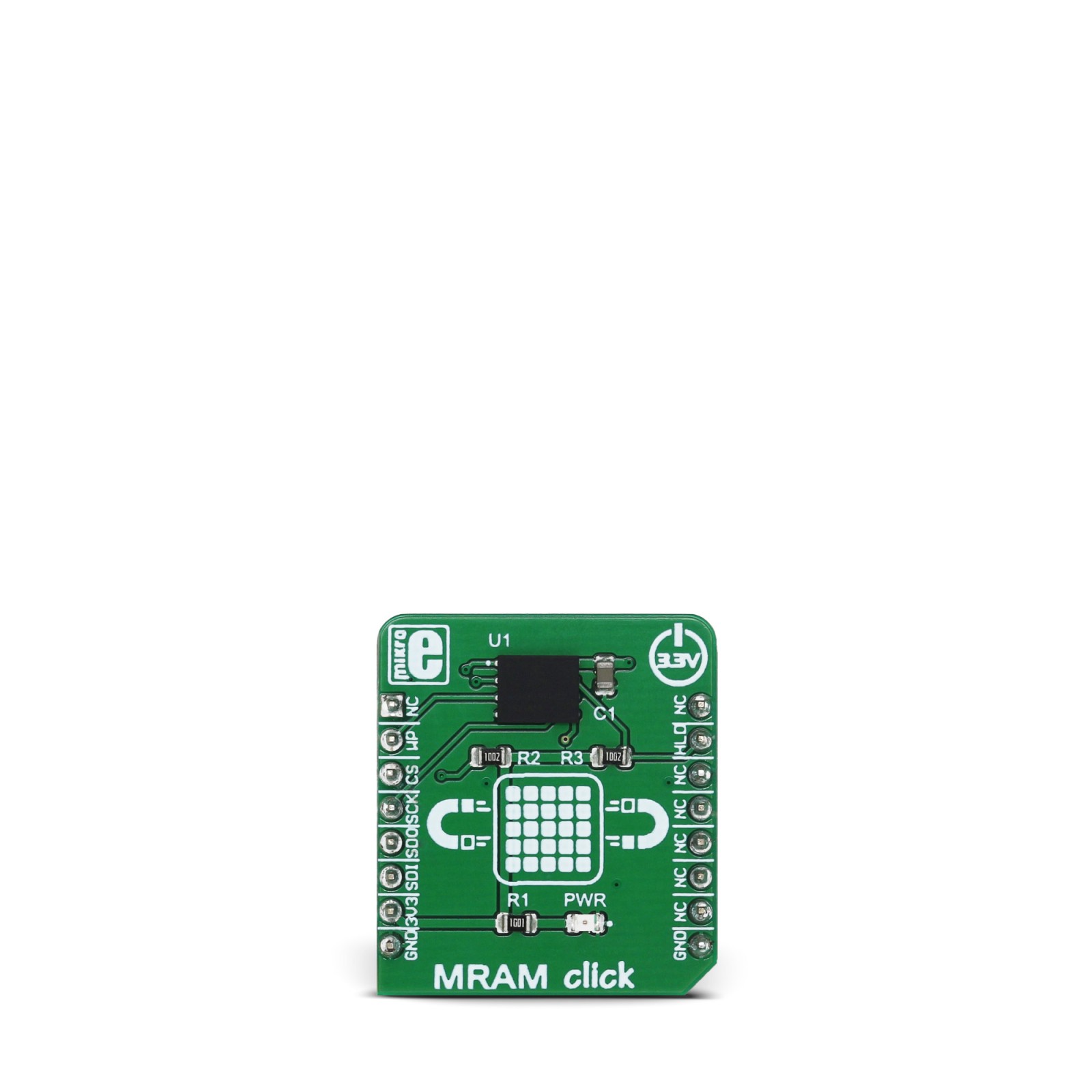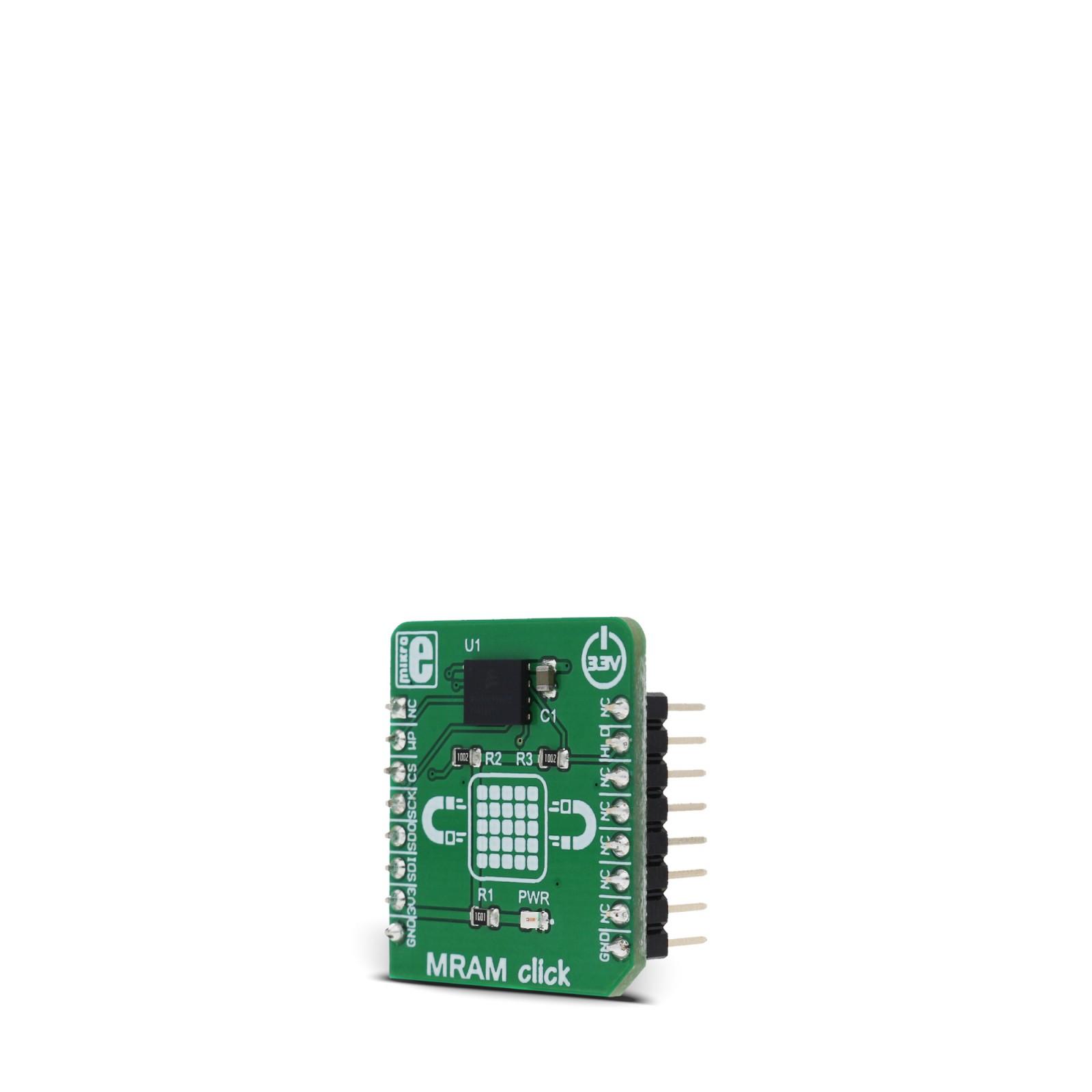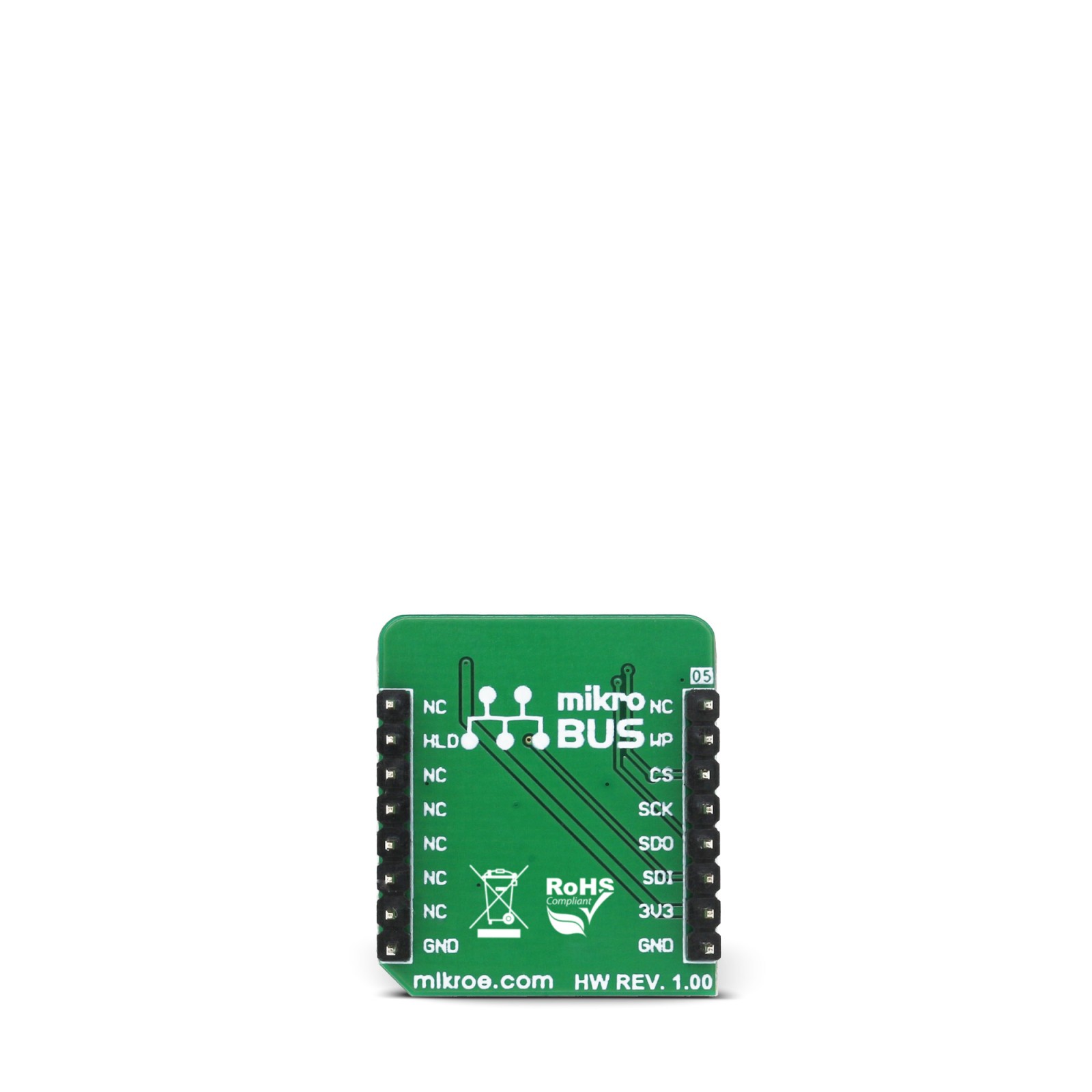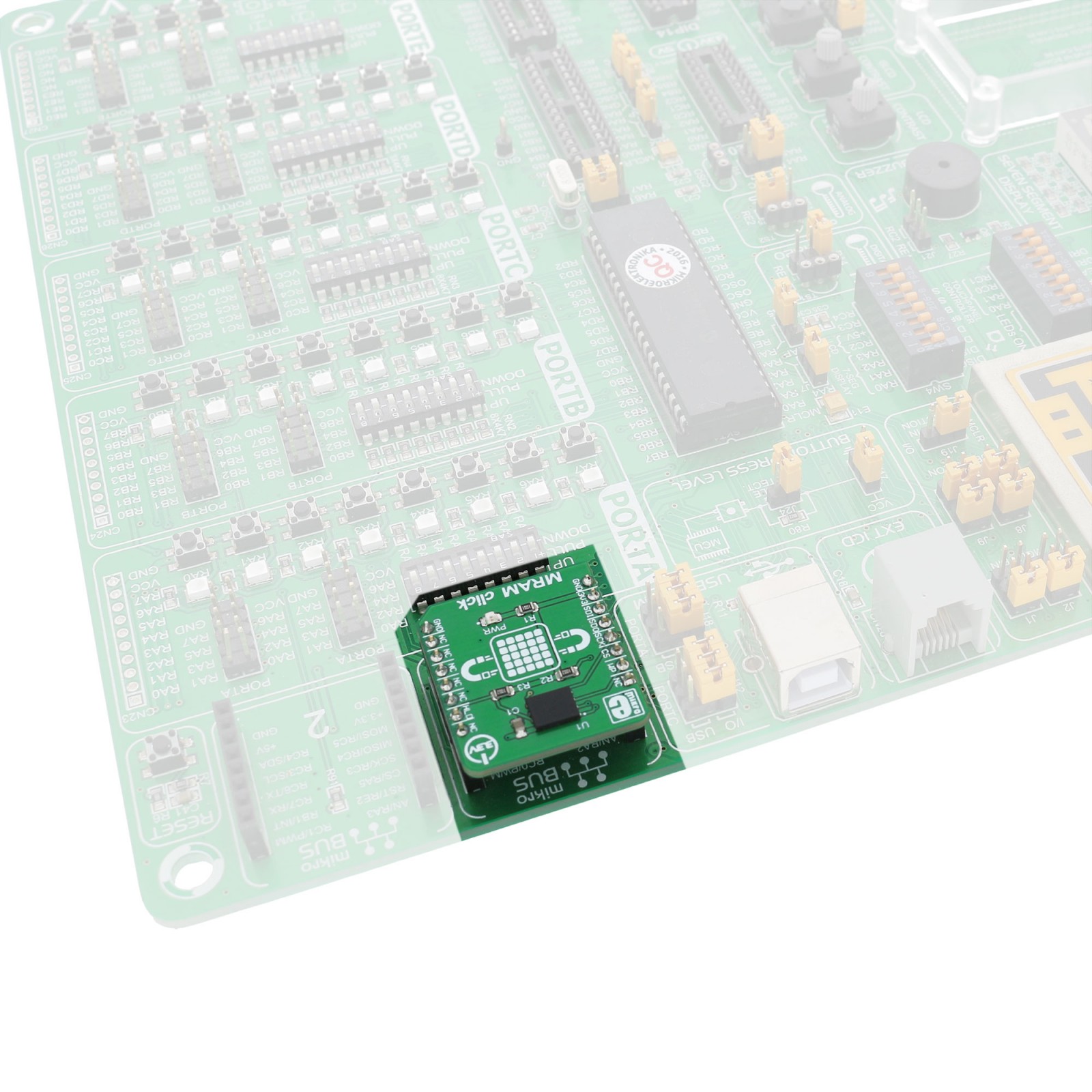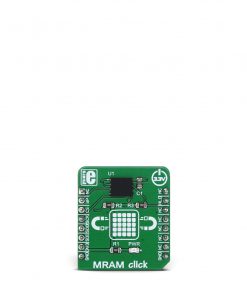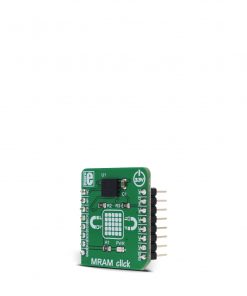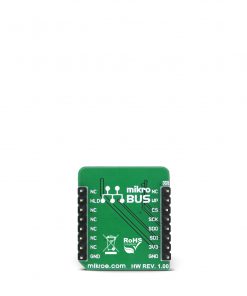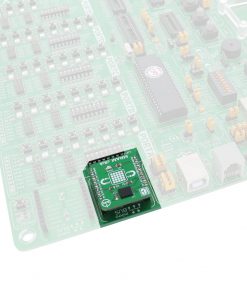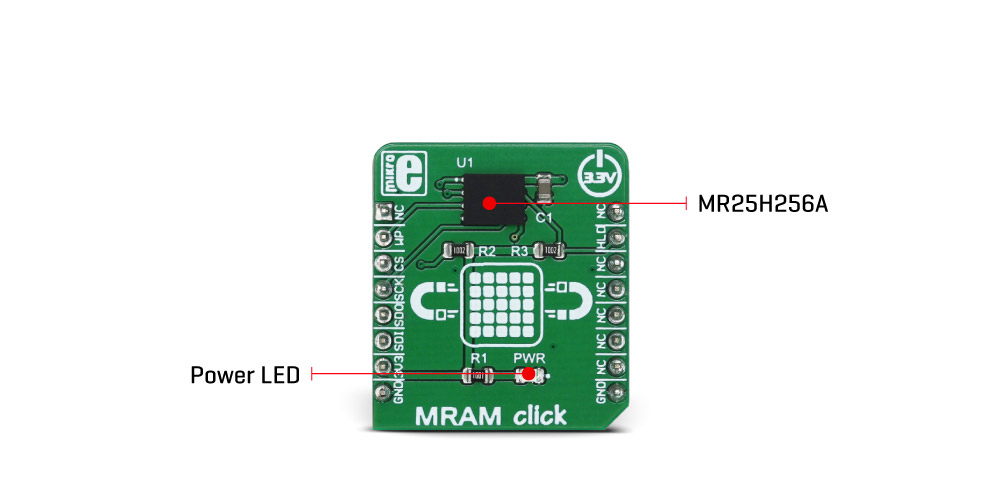MRAM click features MRAM module which contains 262,144 magnetoresistive memory cells, organized into 32,768 bytes of memory. It means that MRAM click is a memory storage device with 32KB of memory space. The used memory module can withstand an unlimited number of write cycles, it has data retention period greater than 20 years and it can read and write to random addresses with no delay.
Besides these features that already mark this kind of memory modules a milestone in memory manufacturing technology, the device features data protection in case of power loss, block write protection, low power consumption and fast SPI interface that can theoretically work up to 40MHz. Because of its universal memory characteristics, MRAM click can be used both as a non-volatile storage media, or temporary RAM expansion for storing variables in any embedded application.
 LPG Click
1 × R330.00
LPG Click
1 × R330.00  Accel Click
1 × R350.00
Accel Click
1 × R350.00  Alcohol 3 Click
1 × R700.00
Alcohol 3 Click
1 × R700.00  MP3 Click
1 × R480.00
MP3 Click
1 × R480.00  GPS Click
1 × R1,050.00
GPS Click
1 × R1,050.00 
